As we head into the cold winter months, the SoHo Broadway Initiative is looking back at some of the biggest snowstorms recorded in New York City history. Starting with The Great Blizzard of 1888, we will examine the impact of snowstorms on residents’ quality of life and how, over the years, New York City has better adapted to supporting its citizens during winter storms and beyond.
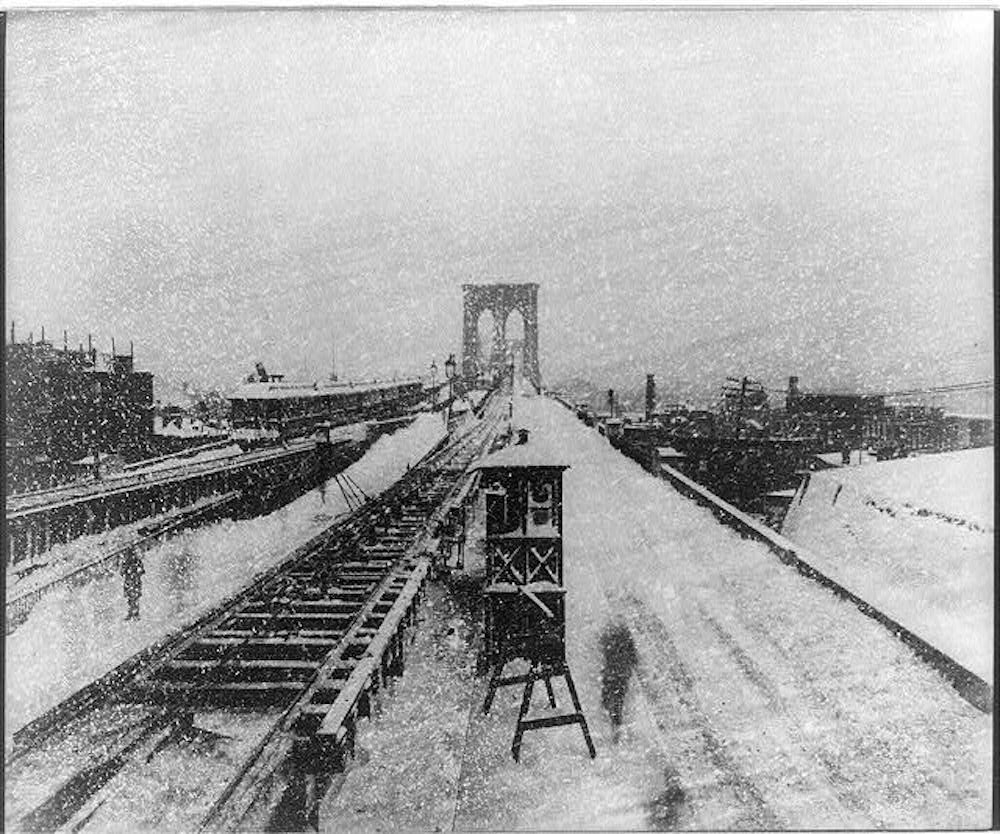
Heavy snow fell on New York City between March 12th and March 14th, 1888. The Great Blizzard of 1888, also known as the Storm of the Century, accrued a total of 21 inches of snow, causing massive disruptions to the daily lives of New Yorkers. Every elevated train line stopped running; the streets could not be trafficked by foot or carriage; and telecommunication lines were broken. Emergency dispatchers could not reach people in need. Nearly 200 people in New York City alone died from the destruction of the blizzard. The fallout from the blizzard put into perspective the need for modern infrastructure improvements. An excerpt from the original New York Times report reads:
“People vexed at the collapse of all the principal means of intercommunication and transportation became reflective, and the result was a general expression of opinion that an immediate and radical improvement was imperative. So the blizzard may accomplish what months, if not years, of argument and agitation might have failed to do.”
The New York Times; published March 13, 1888
The New York City subway system opened in 1904. The Bleecker Street station near Broadway-Lafayette was one of the original 28 stations of the New York City Subway. Below is a photo of the groundbreaking ceremony in 1900:
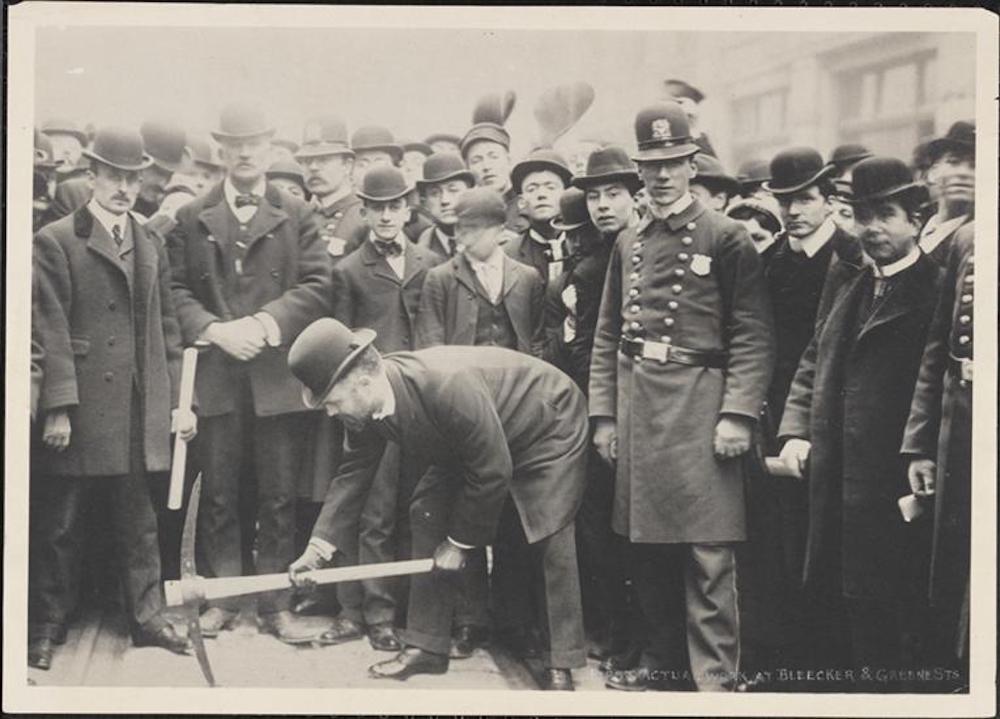
However, not every New Yorker celebrated the push for modernity. Formed in 1929, the Blizzard Men of 1888, organized survivors of the blizzard every year on the anniversary of the blizzard to share stories with each other. Thomas Gilleran, chairman of the 1929 meeting told the Times:
“We blizzard survivors are not only organizing to keep alive the traditions of the store, but we are sick and tired of all this modernity and want to go back to the days when we New Yorkers lived simply and got our fun out of simple things.”
The New York Times; published March 3, 1929
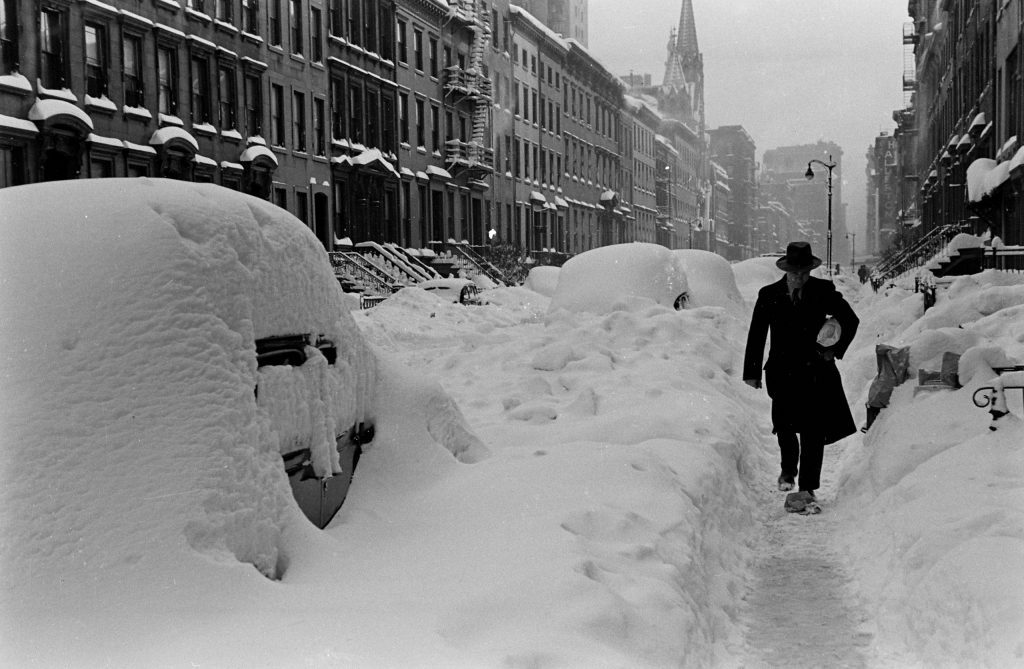
On December 26th, 1947, a snowstorm brought 26.4 inches of snow to New York City. While the total number of inches topped the aforementioned Blizzard of 1888, the 1947 snowstorm had a much milder impact on the city and its residents. According to the New York Historical Society, holiday travelers experienced cancellations and delays. Traffic moved slow and people were concerned about heating their homes. Life Magazine published a series of photos from the 1947 holiday snowstorm. Go back in time by viewing the photos here.
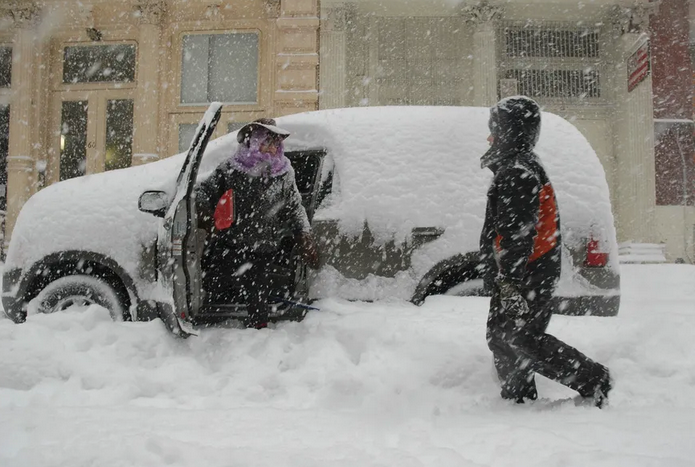
At 26.9 inches of snow, the 2006 East-Cost Blizzard topped the record-breaking snowstorm from 1947. A New York Times article details the response to the blizzard, highlighting the various city and regional agencies that came together to organize a timely action plan. New York City allocated resources tasked at clearing streets. Specifically, the city “deployed 2,200 sanitation trucks rigged as snow plows, 76 Department of Transportation plows, and 350 salt spreaders that doubled as plows and dropped more than 50,000 tons of salt.” Despite many delays, New York City transit buses were able to run all day. The response to this storm also illustrates the many ways in which city residents come together to support each other during difficult times. As the author in this New York Times article recounts:
“Alongside the government forces, battalions of businesses and millions of civilians also fought the whipping, drifting snow, many armed with nothing more imposing than shovels and snow tires.”
The New York Times
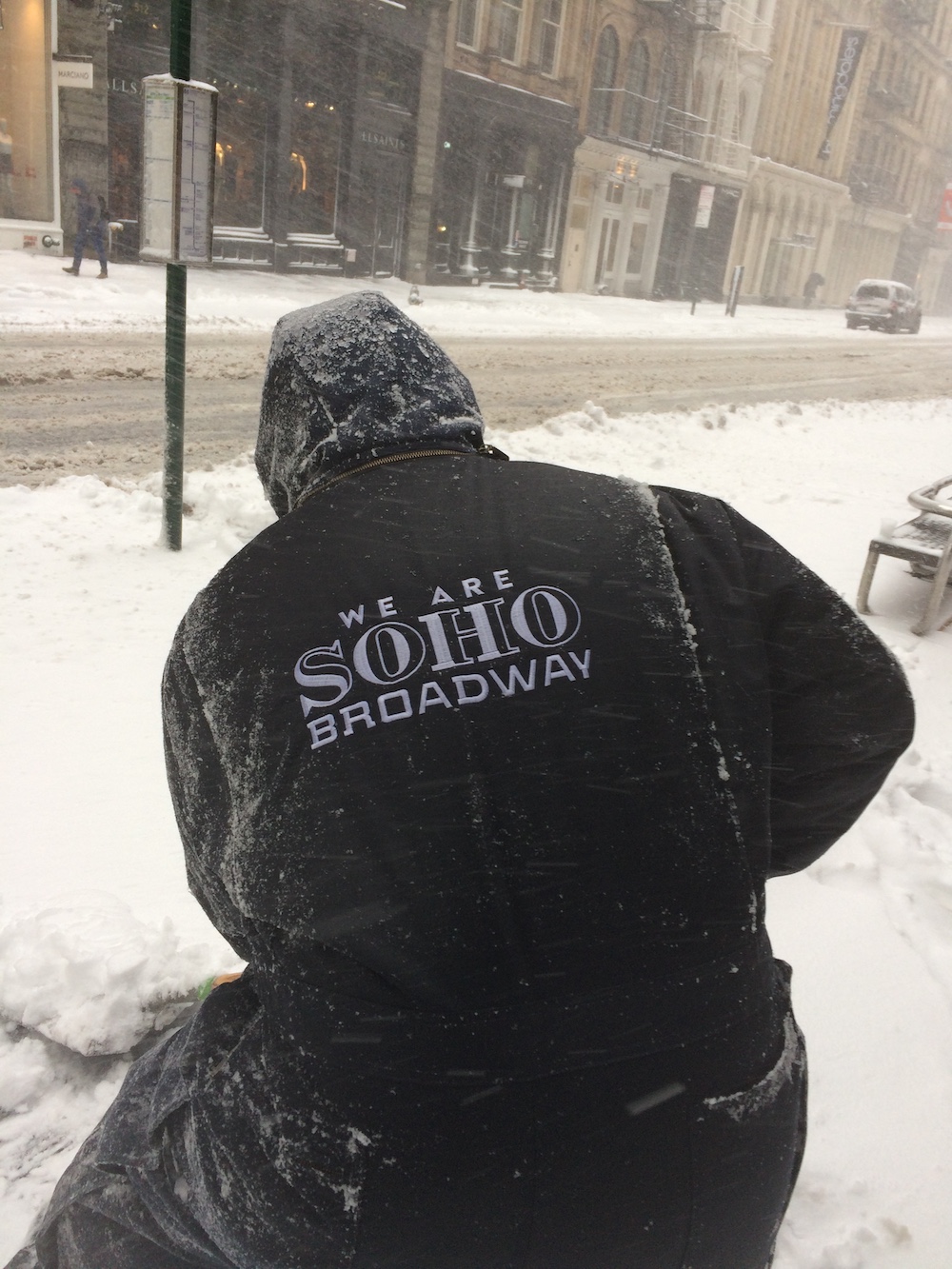
Through all seasons, the SoHo Broadway Clean Team (in partnership with ACE) takes care of the district’s streets and sidewalks. During and after every winter storm, the SoHo Broadway Clean Team removes snow and ice from the crosswalks, subway entrances, and in front of fire hydrants keeping our community safe and mobile.
Top photo: New York Times